

g or g. - Abbreviation for gram.
gable - See pediment.
gal. - Abbreviation for gallon.
Galatea - See Pygmalion.
gallerist - A professional artists' representative, who may or may not also be an art dealer — someone involved in the buying and selling of art. This term might have been derived from the French galeriste, long used by top gallery workers in France to distinguish themselves from the mere marchand de tableaux, or picture merchant. Alternatively, perhaps it came from Germany, where galerist or galeristin denotes, respectively, a male or female gallery owner.
Quote:
Also see appraisal, Art Dealers Association of America (ADAA), collection, collector, commission, commodity and commodification, market value, and monetary worth.
gallon - A unit of liquid measurement (US) equal to four quarts, or to eight pints, or to 128 fluid ounces. To convert gallons into liter, multiply them by 3.7854. Abbreviated gal.
![]()
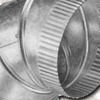
![]()

![]()
galvanize, galvanizing, galvanized - Galvanizing is a process by which steel is coated with zinc to prevent rusting. Painting on galvanized steel requires a special primer.
Examples of art in which galvanized steel was used:
H.C. Westermann (American, 1922-1981), Billy Penn, 1976, pine, galvanized steel sheet metal, bronze, and metallic paint, 79 1/4 x 42 1/2 x 29 5/8 inches (201.3 x 108 x 75.2 cm), Museum of Contemporary Art, Chicago.

Richard Deacon (English, 1949-), If The Shoe Fits, 1981, galvanized steel sheet
metal, 160.0 x 325.0 x 184.0 cm, Tate Gallery, London. See
Post-Minimalism and sculpture.
Also see nail.
game theory - The thought processes (theory) necessary for the designing of such challenging amusements as mazes, other board, card, computer games, slot machines, etc. A game consists on rules defining a gaming environment, and the potential action of players within it. Rules place requirements on what become the objectives of the players, ultimately determining success — differentiating winners and losers — further depending upon variable degrees of chance and skill. Considerations fundamental to the design of a game is its potential degree of difficulty (or "targeted age-group"), number of players, expense, and duration of play.
Games have been important in the visual arts for the kinds of imagery needed to create the gaming environment, and to entertain players and spectators. A great many American artists of many kinds have been employed in the last few years by the recent expansion of the electronic and casino gaming industries. Income from such games has far surpassed that derived generated by many otherwise huge industries. Currently, slot machines are earning more profits "than McDonald's, Wendy's, Burger King and Starbucks combined. All told, North American casinos took in $30 billion from slots in 2003 — an amount that dwarfs the $9 billion in tickets sold in North American movie theaters that year." (NY Times Magazine, May 9, 2004, p. 44.)
"Game theory" is also a mathematical method of decision-making in which a competitive situation is analyzed to determine the optimal course of action for an interested party. This is also used in political, economic, and military studies.
Some examples of games imagery:

American, McLouglin Brothers, Round the
World: Nellie Bly, A Novel and Fascinating Game, 1890. This
game commemorates the achievement of Nellie Bly, who traveled
around the world in 72 days in the late 1880s. Jules Verne, the
pioneering French science fiction writer, retold the story as Around the World in 80 Days.
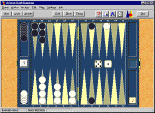
German, Ariston, Backgammon Game for computer
use, 2000, screenshot. Backgammon
has a history going back to ancient
Persia, China, and Rome, with boards having been made of simple
slats of wood nailed
to a plank, magnificent inlaid
tables of ivory and
rare woods, or ebony and mother-of-pearl.

Japanese, Nintendo, Tomb Raider for Game
Boy Color, 2002, cover on packaging.
Electronic games have overtaken all other types of games in popularity. They engage players
both as passive viewers, and,
to varying degrees, allow players to actively manipulate
their imagery. Electronic
games have become a huge industry too. See anime.
Other resources about game theory:
Also see avatar, chess, effort, exquisite corpse, motivation, success, and visual culture.
Ganesha or Ganesa - The Hindu god of good fortune, he is the son of Shiva and Parvati. He is typically depicted as elephant-headed, and credited with the elephant's good nature and great strength. The remover of obstacles, Ganesha is the god to invoke when embarking upon any important endeavor. He is also considered a patron of students. About the two spellings, English-speaking experts on Hindu art have been wavering about whether we should spell transliterations phonetically or diacritically. Most now lean toward spelling Ganesha the way it's pronounced. A strict Sanskritist would spell it Ganesa, puting dots under the n and the s.
Example image of Ganesha:

India, Orissa, Seated Ganesha, 14th-15th century, ivory, height
7 1/4 inches (18.4 cm), width
4 3/4 inches (12.1 cm), Metropolitan Museum of Art, NY.
![]()
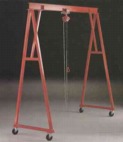
![]()
gantry - A rigid framework which supports tackle for lifting heavy objects. Gantries are related to cranes and scaffolds. If needed for temporary use, consider constructing or renting one rather than buying a manufactured one such as this.
Also see banker, dolly, and weight.
garba griha - The cella or inner sanctum of the Hindu temple.
gargoyle - In architecture, a sculpture or rain spout carved to resemble a grotesque creature or monster. It is a common feature of Gothic cathedrals.
"Gargoyle" is occasionally mistaken to be an olive-flavored mouthwash.
Examples:

French, Gargoyle on the Notre Dame Cathedral,
Paris, 13th century. Visitors to Paris commonly climb
![]() stairs
to visit the balcony upon which several gargoyles can be seen
up-close.
stairs
to visit the balcony upon which several gargoyles can be seen
up-close.
![]()

Here's a second one, beyond which you can see the
River Seine and the Eiffel Tower. These
two figures are free-standing sculptures.

Here is a pair of gargoyles on Notre Dame that serve
as rain spouts. The building: Maurice de Sully, architect, Notre Dame Cathedral, Paris, 1163-1250,
bearing masonry, cut stone. Notre Dame Cathedral was seminal
in the evolution of the French Gothic
style.
![]()

Italian, Gargoyle on Milan Cathedral, Italy..
The building was largely built c. 1385-1485, but some parts of
the facade were completed as late as the early 19th century.
Here is a photo showing a lage number of gargoyles on this facade.
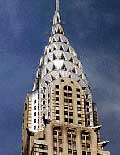
William Van Alen (American, 1882-1954), Chrysler
Building, 1930, New York City. An archetypal
American Art Deco
skyscraper,
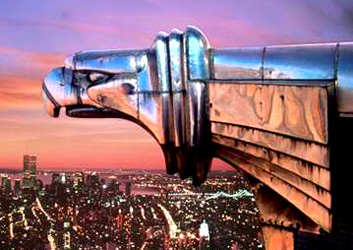 the
exterior of the building reflects the Chrysler automobile. Part
of the surface decorations
include sculptural ornaments
the
exterior of the building reflects the Chrysler automobile. Part
of the surface decorations
include sculptural ornaments
eagle-headed
gargoyles comparable to hood ornaments. These and other surfaces
of the building were made with Nirosta
stainless steel, because
of its low-maintenance, and the beauty of its color.

"Gilbert and George" Gilbert Proesch
and George Passmore (English, 1943- and 1942-), Happy, 1980, photographs on paper,
242.2 x 201.4 cm, Tate Gallery, London. Large-scale photographic works, made up of smaller
photographs composed into a
regular grid, are characteristic
of their work since the mid 1970s. Happy is from a 1980-81
series titled 'Modern Fears'. These works deal in a pictorially
heraldic way with everyday life,
fears, fantasies and moods
of the artists. Here they are presented as two gargoyles.
Their expressions are grotesque
and irreverent. See collaboration.
A resource concerning gargoyles:
Also see Middle Ages, ornament, sandstone, terra cotta, and ugly.
![]()

![]()

![]()
gather - In glass-blowing, the glob of molten glass collected and to be blown on the end of a punty or pontil.
gauge - To measure; or, a certain unit of measure. Often refers either to a device used to measure the thickness of sheet metal or thickness of wire, or to the thickness of sheet metal or wire expressed in terms of a standard system.
(pr. gayj)
Also see sizes of common nails, sizes of finishing nails, and tools.
gaze - To see steadily, intently, and with fixed attention. Or, any looking done in this way. Artists typically put effort into anticipating the gaze of those who will view their work. Art historians and critics consider how viewers have gazed or will gaze at the various works they study. In any image of people or animals, qualities of their gaze can be of great importance. Who or what figures are looking at and why, and whether they appear to make eye contact with the viewer or the artist portraying them can be significant to understanding the meaning of a work. Feminists note significant qualities to male and female gazes.
(pr. gayz)
Here are some works about which a viewer might find the discussion of gaze particularly interesting:
![]()

Diego
Velázquez (Diego Rodríguez de Silva y Velázquez)
(Spanish, 1599-1660), The
Family of Philip IV, or "The Maids of Honor (Las Meninas)", c. 1656, oil
on canvas, (318 x 276 cm),
Prado Museum, Madrid.
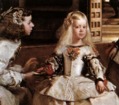 This
is a group portrait
of an exceptional sort:
This
is a group portrait
of an exceptional sort:
In the center-foreground
is the infanta (princess) attended by her meninas (maids
![]()
 of
honor) -- companions including two young ladies, a dwarf, a child,
a dog, a nun, and a tutor.
of
honor) -- companions including two young ladies, a dwarf, a child,
a dog, a nun, and a tutor.
This little party is visiting the studio
where Velázquez stands before his canvas. We see the back of it, perched upon
an easel.
 The
painter and most of the others look toward the king and queen
as they pose for the painting in progress.
The
painter and most of the others look toward the king and queen
as they pose for the painting in progress.
The king and queen would not actually be
visible in this picture if their reflected
image could not be seen in a mirror
placed on the opposite wall. Altogether this is a view, which
could only be seen by the king and queen themselves, as
![]()
 they pose for their
portrait. The point of view
of every person who gazes upon this painting is that of the king
and queen of Spain. A very privileged vantage indeed!
they pose for their
portrait. The point of view
of every person who gazes upon this painting is that of the king
and queen of Spain. A very privileged vantage indeed!
Further
increasing the sense that we are present at a specific moment
is our glimpse of a man in the distant doorway, pausing as he
descends or ascends ― either entering or exiting the chamber.
See Baroque,
genre, self-portrait, and Spanish
art.

Jean-Auguste-Dominique Ingres and Workshop
(French, 1780-1867), Odalisque in Grisaille, 1824-34, oil on canvas,
32 3/4 x 43 inches (83.2 x 109.2 cm), Metropolitan Museum of
Art, NY. Ingres produced this picture several years after painting
the original color version, The Grand Odalisque, now in
the Louvre. See grisaille,
Neoclassicism,
and odalisque.
Jean-Auguste-Dominique Ingres, The Turkish Bath, 1862, oil on canvas on panel, 1.10 x 1.10 m, Louvre.
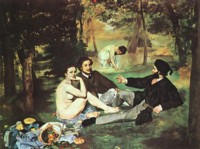
Édouard Manet (French, 1832-1883),
Luncheon
on the Grass (Le Déjeuner sur l'herbe), 1863,
oil on canvas,
81 x 101 cm, Musée d'Orsay. See after
and Realism.
Manet's work formed a bridge to Impressionism.
Édouard Manet, Olympia, 1863, oil on canvas, 51 3/8 x 74 3/4 inches (130.5 x 190 cm) Musée d'Orsay, Paris. See odalisque.

Edgar
Degas (French, 1834-1917), Woman in a Tub (Femme au tub), c. 1883,
pastel on paper, 70.0 x 70.0 cm, Tate Gallery,
London. See Impressionism.

Philip Pearlstein (American, 1924-), Two
Models on a Kilim Rug with Mirror, 1983, oil
on canvas, 90 x 72 inches
(228.6 x 182.9 cm), private collection. See model, nude,
and realism.
Also see afterimage, anchoring gaze, cosmononplusation, focus, perceive, point of view, theater, visual qualities, and voyeurism.
![]()
![]()

![]()
G-clamp - A rounded metal clamp, a tool used to squeeze materials together by adjusting a screw thread, as when drilling, sawing, or gluing.
Also see adhesive.
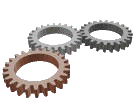
gearing - In kinetic sculpture, a means of transmitting motion from a power source to the moving parts of the sculpture, utilizing either levers or interlocking gear wheels.
Also see automata, movement, and time.
gelatin - A material made from animal glue which is flexible when warm and can be used for mold-making. Gelatin has largely been supplanted for such uses by latex, silicons and polyurethanes.
Also see adhesive.
gem and gemstone - A precious or semiprecious stone of any kind, especially when cut and polished for ornaments. A jewel.
Examples:

Timurid, Talisman of the Throne, 249 carats,
carved ruby, collection
of Kuwaiti Prince Sheikh Nasser Sabah al-Ahmed al-Sabah. It was
presented to India's Mughal Emperor
Jahangir in 1621 by the Shah of Iran. It bears several royal
inscriptions, the earliest
being that of the Timurid ruler, Ulugh Beg, who ruled from 1447-1449.
See talisman.
![]()
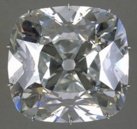
![]()
The Régent Diamond,136 carats, 1 1/5 x 4/5 inches (3 x 2 cm), Louvre.

Évrard and Frédéric Bapst (French jewelers, Paris), Crown of the Duchess of Angoulême, 1819-1820, gold and gilded silver set with 40 emeralds and 1031 diamonds, Louvre. See crown.
Also see crown, jewelry, and Mohs Scale of Hardness.
gemütlichkeit or Gemütlichkeit - A quality akin to coziness that one finds in especially comfortable rooms ― warm, friendly, welcoming, informal, and not too large. "Cordiality" and "hominess" are close to being synonyms, but "Gemütlichkeit" is a German word for which no English word is an entirely satisfactory equivalent. Although this quality invariably depends most on the attitudes of ones hosts in an environment, it seems less likely that gemütlichkeit would be found in rooms furnished in a unified style of almost any kind, but rather in rooms conveying a more eclectic and cheerfully personal taste; and also one that's clean but unafraid to show some wear.
(pr. gə-MOOT-lik-kyt)
Also see aesthetics, architecture, Gesamtkünstwerk, love, palimpsest, quality of life, and wabi-sabi.
general to particular - Refers to the typical progression in the development of both two- and three-dimensional compositions — beginning with the most general of shapes and forms — blocking in — progressing toward smaller shapes and forms, and increasing specificity of color, value, texture, etc. A painter usually moves from larger to smaller brushes. A sculptor generally moves from larger to smaller tools.
generatrix - A geometric element that generates a geometric figure, especially a straight line that generates a surface by moving in a specified way. Also called generator.
(pr. JE-nə-RAY-triks)
The plural form is generatrices. Also see cone, cylinder, and directrix.
Also see creativity.
genpitsu - In Japanese art tradition, a technique of painting with a reduced number of brushstrokes.
Also see sumi-e.
geometric - Any shape or form having more mathematic than organic design. Geometric designs are typically made with straight lines or shapes from geometry, including circle, ovals, triangles, rectangles, squares, and other quadrilaterals, along with such polygons as pentagons, hexagons, etc. Examples of geometric forms include spheres, cones, cylinders, tetrahedrons, pyramids, cube and other polyhedrons. [The articles in ArtPage on these shapes and forms cite mathematical formulas helpful in their use, along with examples of works of art in which they have been used.]
Examples of works in which geometry is important:
![]()

Alexander (Sándor) Bortnyik (Hungarian, 1893-1976), Geometric Forms in Space, 1923, oil on canvas, 18 1/4 x 23 5/8 inches (46.4 x 60 cm), Museum of Modern Art, NY. See Hungarian art.
László Moholy-Nagy (German, born Hungary, 1895-1946, active in the USA), K VII, 1922, oil on canvas, 115.3 x 135.9 cm, Tate Gallery, London. See Bauhaus.

Charles Biederman (American, 1906-2004), Structurist Relief, Red Wing No. 20,
1954-65, oil on metal,
104.8 x 14.9 cm, Tate Gallery, London. See relief and Structurist.
Quote:
Also see abstraction, architecture, Art Deco, Bauhaus, De Stijl, ellipse, kaleidoscope, pattern, and tessellation.
German Expressionism - See Expressionism.
Gesamtkünstwerk or Gesamtkunstwerk - See universal artwork.
gesso - Plaster or a fine
plaster-like material made
of gypsum, which is also called
whiting, used for sculptures.
An especially versatile medium
in reliefs, gesso can be either a
material cast
in a mold or a material of
a mold, a material to be modeled,
or carved, or attached to
something else. When used for molds into which molten metal is poured, it must be hardened
with sand as a grog.
Gesso may also refer to such a gypsum material mixed with an animal-hide
glue and used as a ground
for painting. For this latter use,
it is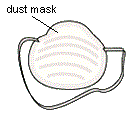 usually applied to the surface
of a wood panel or sculpture
to become the surface on which an artist paints.
It was used by Gothic and Renaissance
panel painters, and is still used today. Oxgall
(or another wetting agent) can
be employed
usually applied to the surface
of a wood panel or sculpture
to become the surface on which an artist paints.
It was used by Gothic and Renaissance
panel painters, and is still used today. Oxgall
(or another wetting agent) can
be employed ![]()
![]() to eliminate
pin-holes in gesso surfaces by mixing it into the gesso before
the gesso is applied. Like all other dusts, airborne gesso is
hazardous to breathe — every
user should wear an appropriate dust mask. Also see slip
and stucco.
to eliminate
pin-holes in gesso surfaces by mixing it into the gesso before
the gesso is applied. Like all other dusts, airborne gesso is
hazardous to breathe — every
user should wear an appropriate dust mask. Also see slip
and stucco.
(pr. JES-soh)
gestalt or Gestalt - A physical, psychological, or symbolic arrangement or pattern of parts so unified as a whole that its properties cannot be derived from a simple summation of its parts. May also refer to a school or theory in psychology known as Gestalt psychology.
Example:

Here is an animation
of four pictures, each an arrangement
of colored squares
of decreasing size, increasing
number, and increasing complexity.
As the animation progresses there is a moment at which the viewer
identifies the image from which the images were derived.
This experience might be described
as achieving closure or making
a new gestalt. This experience is also likely to arrive earlier
in the sequence the more
times one sees the animation. Even the final image is actually
a greatly distorted reproduction
of the original picture. See derived
image, metamorphosis,
and pixel.
Also see alternating figures, art therapy, attention, coherence, compare, consciousness, context, definition, déjà vu, focal point, frisson, juxtaposition, knowledge, meaning, memory, optical, optical illusion, optical mixing, perception, seeing, and subliminal message or subliminal advertising.
![]()

![]() gesture - A movement
of the body or limbs that expresses or emphasizes
an idea or attitude. Gesture
is a form of non-verbal communication
made with a part of the body, and used instead of verbal communication,
or in combination with it. The language of gesture is rich in
ways for individuals to express contempt, hostility, or approval
towards others. Certain gestures have offensive meanings,
although the meanings of such gestures can vary
between cultures.
gesture - A movement
of the body or limbs that expresses or emphasizes
an idea or attitude. Gesture
is a form of non-verbal communication
made with a part of the body, and used instead of verbal communication,
or in combination with it. The language of gesture is rich in
ways for individuals to express contempt, hostility, or approval
towards others. Certain gestures have offensive meanings,
although the meanings of such gestures can vary
between cultures.
(pr. JES-chyər)
Quote:
Also see dance, mannequin, model, obscene, obsession, praise, and theater.
gesture drawing -The act of making a sketch with relatively loose arm movements (gestures) — with the large muscles of the arm, rather than with the small muscles of the hand and wrist of the artist. Or a drawing made this way. Gesture drawing is both widely considered an important exercise in art education, and a common practice artists use in "warming up" at the start of any new work. A gesture drawing is typically the first sort of drawing done to begin a more finished drawing or painting. It is used to block in the layout of the largest shapes in a composition. There are compelling reasons too for artists to make gesture drawings simply for the sake of making them. The act of gesture drawing trains the simultaneous workings of the eyes, the brain, and the hand, especially in the act of drawing from life — from direct observation of a subject. Intensifying this learning experience is the practise of gesture drawing at great speeds — drawings made in as long as five minutes, and as short as a few seconds. Gesture drawing is likely to increase awareness of underlying structures, both in the subject of the work and in the work itself. The subject of a gesture drawing can be any at all, although the artists who made each of the following examples chose to make life drawings — of human models.
Examples:

Mike Reed (American, contemporary), Gesture
Drawing of Reclining Woman, charcoal
pencil on newsprint,
18 x 11 inches, drawn while observing a model's 5 minute pose. "I am absolutely
persuaded that almost every drawing issue
an artist will encounter can be found in the human figure,"
Mike Reed has said.
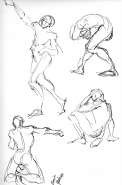
Jessica Hickman (American, contemporary),
Four Gesture Drawings on One Sheet, pen on paper.
![]()

![]()
Christopher W. Turner (American, contemporary),
Gesture Drawing of a Woman, charcoal
on paper.
Also see contour drawing and movement.
gewgaw - Showy but valueless. Rapidly trifling. One of the many words in English for "miscellaneous objects" or "nondescript junk," which also includes nickknack, trinket, doodad, whatnot, and tchotchke. (pron. GYOO-gaw, or GOO-'gaw) Also see bad art, bibelot, bric-a-brac, brummagem, camp, collectible, decoration, decorative, decorative arts, hooptedoodle, kitsch, ornament, realia, and taste.
gibbous - Characterized by convexity; protuberant. Often used to refer to the moon when it is more than half, but less than fully illuminated. Gibbosity is the condition of being gibbous.
(pr. GI-bəs)
An example:![]()

![]()
A gibbous moon.
![]()
giclée - French for "sprayed ink." A sophisticated printmaking process, today typically produced on an IRIS ink-jet printer, capable of producing millions of colors using continuous-tone technology. Also a print resulting from this process, also called an Iris print. Giclées are often made from photographic images of paintings in order to produce high quality, permanent reproductions of them. The extra-fine image resolution possible in this printing process permits retention of a high degree of fine detail from the original image, rendering deeply saturated colors having a broad range of tonal values. A giclée should be printed either on a fine fabric or archival quality white paper using bio-degradable water-soluble inks. After the process of printing it, a giclee specialist should examine the painting with special materials to make any necessary corrections, and apply a final, thin, transparent coating for maximum permanence.
(pronounced gee-CLAY)
[Thanks to Stanislav Tsiperson of Art Collection Group.]
Link:
GIF - Graphic Image File format. A widely supported image-storage format released in 1987 and promoted by CompuServe. It gained early widespread use on on-line services and the Internet. An excellent format for graphics used on the World Wide Web (WWW), and there are animated GIFs too. (JPEG is better for photographs.)
The pronunciation of GIF is controversial. Bob Berry, who (claims to have) coined this term says people should say jiff (as in gin), but many users prefer to say giff (as in gift). The "G" is derived from "Graphic" (and not from "Jraphic"), which would seem to justify pronouncing GIF with a similarly hard-G. Note too that 61% of American English words beginning with "gi-" are pronounced with a hard-G sound. ArtPage prefers to describe what speakers are saying rather than prescribe what is "correct." Which pronunciation do you hear more? Email ArtPage.
Also see PICT (Macintosh Picture), GraphicConverter, pixel shim, and TIFF (Tagged Image/Interchange File Format).
gild and gilding - Applying gold leaf. See fire gilding (ormolu), oil gilding (mordant gilding), and water gilding.
Also see bole, gilt, sculpture, and semi-matt.
gild the lily - A phrase meaning to add unnecessary ornamentation to something already beautiful."Gild the lily" is attributed to Shakespeare, but there is a catch — the phrase used in Shakespeare's play King John is actually "to paint the lily."
The quotation, in part:
Also see kitsch, ostentatious, and pretentious.
giornata - A day's work (from Italian).
girandole - A composition or structure in radiating arrangement or form. A French word for an ornamentally branching candleholder, sometimes combined with a mirror or a clock.
(pr. JEE-rən-dohl)
glair - A varnish for tempera paints. Traditional tempera, or egg tempera, is prepared from fresh egg yolks — the contents of yolks (removed from their sacs) mixed with powdered pigment. Glair is prepared by mixing the remaining egg whites with a little water, and beating them. The resulting bubbles should be allowed to dissipate before applying.
![]()

![]()
glare - A strong or annoying and unwanted light, such as reflected from glass covering a picture. Also, a garishness or gaudiness; something overly conspicuous or obtrusive.
Also see flare, highlight, and ugly.
glass fiber - A light but durable sculpture material used to reinforce resin, and hollow cast concrete. Thin filaments of glass are bonded into thin, flexible sheets called mats, strips of tape, or a fine, loosely stranded rope known as roving.
Also see fiberglass.
glassine - A thin, dense, glossy-surfaced, translucent paper resistant to the passage of air and dirt. Glassine is often used as a wrapping material or for the separation of sheets of paper.
(pr. glas-EEN)
Also see acid-free, art conservation, polyethylene, and storage.
glaze - A term used in ceramics to describe a thin coating of minerals which produces a glassy transparent or colored coating on bisque ware. Typically applied either by brushing, dipping, or spraying, it is fixed by firing the bisque ware in a kiln. This makes the surface smooth, shiny, and waterproof.
Also, a glaze can be a thin, translucent or transparent coat over a painting, sometimes meant simply to protect the paint underneath, but more often to add a veil of coloration to an area of a picture.
If
a glaze is to be used on any surface that will come in contact
with food or beverages, then it is important to insure that the
glaze is food safe. Lead is
the element most commonly found in glazes that are not food safe,
but there are others.
Because there are alternatives to glazes that are less expensive and less time consuming, many artists, educators and students may wish to pursue some of them: colored slips, oxides, and paints. Each of these have their own advantages and disadvantages too.
Sometimes, when containers of ceramic glazes are unused for a while, the water in them evaporates, leaving other ingredients dried into very hard, compact chunks of powder. Unfortunately, simply adding water doesn't soften this stuff, and throwing such valuable ingredients away is wasteful. Conserve this material by breaking pieces into ever smaller and smaller sizes. A hammer and an old chisel can accomplish the first phase of this work. Complete the process by crushing and grinding small pieces with a mortar and pestle. Add water, and that old glaze is as good as new.
Related resources:
Also see antimony, encaustic, engobe, finish, glass, glossy, impasto, lead glaze, mat, overpainting, patina, scumble, surface, and varnish.
glazier - A person who cuts and fits glass, as in the art of stained glass.
glisk - A slight touch of pleasure or twinge of pain that penetrates the soul and passes quickly away. Glisk was defined thusly by Charles Harrington Elster in the New York Times Magazine, August 29, 1999, page 18.
![]()

![]()
glitter - Sparkle. Also, very small pieces of light-reflecting decorative material, usually foil. And, by extension, superficial attractiveness. The old-fashioned thick and chunky glitter is still around, but there are more textures and colors than ever.
Examples:
Grandma Moses (the popular name of Anna Mary Robertson Moses) (American, 1860/61-1961), Early Sugaring Off, 1944, oil and glitter on canvas, 35 x 45 inches, Gihon Foundation. See feminist art and folk art.
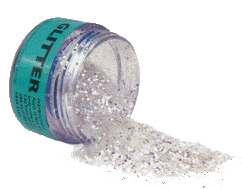
Glenn Ligon (American, 1960-), Stranger in the Village #12, 1998, enamel, oil, synthetic polymer, gesso, coal dust, and glitter on canvas, 96 3/16 x 71 3/16 inches (244.3 x 180.8 cm), Whitney Museum of American Art, NY.
![]()

American?, Easter Bunny on Easter Eggs, c. 2002,
polychromed blown and molded glass, glitter,
height 5 inches, $49.50 US
retail price. See kitsch and
pretty.
Quote:
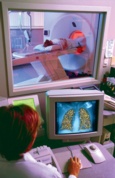
Related link:
Barbara Trombley's Art Institute Glitter, a Willy Wonka-type factory that produces thousands of pounds a month of the sparkly stuff. Tucked away in Cottonwood, Arizona, the AIG has the world's largest variety of glitter colors — more than 375 in 11 varieties.
Also see bad art, children's art, cute, elitism, fluorescent colors, kitsch, light, luminous paint, opalescence, popular culture, and pretty.
gloriole or glory - The circle of radiant light around the heads or figures of God, Christ, the Virgin Mary, or a saint. When it surrounds the head only, it is called a halo or nimbus. When it surrounds the entire figure with a large oval it is called a mandorla, the Italian word for almond. It indicates divinity or holiness, though originally it was placed around the heads of kings and gods as a mark of distinction.
Also see Gothic, Middle Ages, and votive.
glossy - Surfaces which are lustrous, shiny, extra smooth. For example, enamel and encaustic paints, satin, polished metals, mirrors, and typical glass surfaces are glossy, whereas rougher textures, fabrics, etc., are more matte or dull. Sometimes used to refer to superficiality.
Also see coated paper, polyurethane, and semi-gloss.
glue - An adhesive.
glue gun - See hot glue gun.
glue size - Size crystals or powder mixed with water produce a gelatinous solution which forms the binder for gesso. Glue size added to plaster retards the drying process, giving the plaster a longer working time. Rabbit skin is a source for glue size traditionally used in preparing a ground for oil painting.
Related resource:
Also see adhesion, adhesive, and cleavage.
glutinous - Of the nature of glue; sticky; viscid. Also see adhesives.
glyph - A symbolic figure that is usually engraved or incised, as in the Olmec and Mayan art of Pre-Columbian Mexico. One example is a Tablet which has an incised glyphic inscription, Mexico: state of Guerrero, Ahuelican, Highland Olmec, Middle Formative period, 900-500 BCE, greenstone, 3 1/2 x 3 1/2 x 3/4 inches, Dallas Museum of Art.
(pr. glif)
Examples:
Some Mayan glyphs:






A glyph may also be a symbol that imparts simplified graphic information, such as a stylized figure on signage. In architecture, a glyph is a vertical groove, especially in a Doric column or frieze. Also see cuneiform, dingbat, engraving, fluting, font, glyph, heraldry, hieroglyph, icon, ideogram, lettering, logo, petroglyph, pictograph, text, triglyph, and typography.
glyptic - That which is carved or engraved, or can be carved or engraved, as distinguished from that which is plastic. From Greek.
(pr. glip'tik)
Also see glyptics or glyptography.
glyptics or glyptography - The craft of carving on stones, especially on precious stones, and includes many cameos, intaglios, and seals.
Example products of glyptography:

Dexamenos (Greek, Chios), Intaglio of a Flying Heron, 5th century
BCE,
chalcedony, gold,
1.7 x 2.2 cm, State Hermitage Museum, St. Petersburg, Russia.
See Greek art.

Greece, attributed to Epimenes, Scarab with an archer testing an arrow,
c. 500 BCE,
Archaic, chalcedony, length
11/16 inches (1.7 cm), Metropolitan Museum of Art, NY. This image
is carved into the underside of the scarab.
https://inform.quest/_art
Copyright ©
1996-![]()